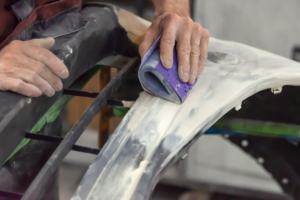 Introduction to Car Paint Fixing:
Introduction to Car Paint Fixing:
Car paint fixing is an essential aspect of vehicle maintenance that helps preserve both the aesthetic appeal and the value of your car. Whether you have minor scratches, chips, or more significant damage, understanding how to fix car paint can save you money and keep your vehicle looking its best. This comprehensive guide will take you through the steps of car paint fixing, from identifying the type of damage to choosing the right repair method and executing it effectively.
Understanding Car Paint Damage
Before diving into car paint fixing, it’s crucial to understand the different types of paint damage. Common types include:
- Scratches: These can range from light surface scratches to deep ones that reach the metal.
- Chips: Typically caused by stones or debris hitting the car, chips can expose the metal underneath, leading to rust if not addressed.
- Fading and Oxidation: Exposure to sunlight and environmental elements can cause the paint to fade or oxidize, giving it a dull appearance.
- Peeling: Often due to poor adhesion or age, the paint can start to peel away from the car’s surface.
Tools and Materials for Car Paint Fixing
Having the right tools and materials is essential for effective car paint fixing. Here’s a list of items you might need:
- Touch-up paint (matching your car’s color)
- Primer
- Clear coat
- Sandpaper (various grits)
- Polishing compound
- Wax
- Clean cloths and microfiber towels
- Masking tape and paper
- Paint applicator (brush, pen, or spray)
Steps for Car Paint Fixing
- Assess the Damage: Begin by thoroughly inspecting the damaged area. Determine the extent of the damage to decide whether you can fix it yourself or if it requires professional assistance.
- Clean the Area: Clean the damaged area with soap and water to remove dirt and debris. This ensures that you don’t trap any particles under the new paint.
- Sand the Area: For scratches and chips, use sandpaper to smooth out the edges. Start with a coarser grit to remove rough edges and then switch to a finer grit for a smooth finish.
- Apply Primer: If the damage has exposed the metal, apply a primer to protect it from rust. Let the primer dry completely before moving to the next step.
- Paint Application:
- Touch-Up Paint: For small scratches and chips, use a touch-up pen or brush. Apply thin, even layers of paint, allowing each layer to dry before applying the next.
- Spray Paint: For larger areas, use spray paint. Hold the can at a consistent distance and apply several thin coats, allowing each to dry before applying the next.
- Apply Clear Coat: Once the paint is dry, apply a clear coat to protect the paint and give it a glossy finish. Like the paint, apply several thin layers and let each one dry.
- Polish and Wax: After the clear coat is completely dry, use a polishing compound to blend the repaired area with the rest of the car’s surface. Finish by waxing the area to provide an additional layer of protection.
Tips for Effective Car Paint Fixing 
- Match the Paint Color: Ensure you use the exact color match for your car. Most vehicles have a paint code that you can find on a label inside the driver’s door.
- Work in a Controlled Environment: Perform car paint fixing in a clean, dust-free environment to prevent contaminants from affecting the paint job.
- Take Your Time: Rushing the process can lead to uneven paint or visible repair lines. Be patient and let each layer dry thoroughly.
When to Seek Professional Help
While DIY car paint fixing can handle minor scratches and chips, some situations warrant professional assistance:
- Extensive Damage: Large areas of damage, especially those involving dents or deep scratches, are best left to professionals.
- Complex Colors: Cars with metallic or pearlescent paints require specialized equipment and techniques for an exact match.
- Lack of Tools and Experience: If you lack the necessary tools or confidence in your ability to perform the repair, seeking professional help can ensure a high-quality result.
Car paint fixing is a valuable skill for any vehicle owner. By understanding the types of paint damage and following the appropriate steps, you can keep your car looking its best and prevent further deterioration. Whether you tackle the job yourself or seek professional help, maintaining your car’s paint not only enhances its appearance but also protects its value over time.
Looking for the best car service shop near Dubai? Check out https://autostadtmotorservices.ae/They offer top-notch services, including:
Here are some more information for your convenience:
Visit their blog AutoStadt Motor Services! for the latest updates and service tips!
